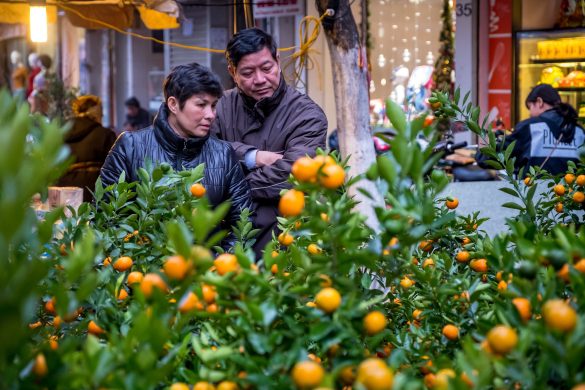Quinoa er i de seneste år blevet reddet fra obskuriteten og spises i dag mange steder, herunder Danmark. Inspireret af succesen lancerer FNs organisation for fødevarer og landbrug, FAO, nu ”månedens afgrøde”, for at redde andre afgrøder fra glemslen.
All over the world local varieties of fruit, vegetables and grain are grown. Many are seemingly forgotten or are underutilized despite having outstanding nutritional or taste qualities. Some have good commercial potential and could be an excellent cash crop for a smallscale or family farmer, aimed at the local, regional or international market.
In 2013, the International Year of Quinoa, an Andean super grain, brought the world’s attention to a little-known traditional crop. The response was overwhelming and now quinoa is enjoyed far beyond the mountains of South America.
Encouraged by this success, FAO will run a Traditional Crop of the Month feature to bring other fine foodstuffs to the attention of the world. Enjoy the tour!
These are the crops that will be introduced during the coming 12 months:
- Amaranth
- Moringa
- Teff
- Finger millet
- Bambara groundnut
- African garden egg
- Cactus pear
- Buckwheat
- Yam bean
- Breadfruit
- Oca
- Grass pea
Introducing this month’s hidden wonder
Crop of the month in August, Amaranth is usually picked fresh for use as greens in salads or cooked with meat or fish. It is gluten free and good for cardiovascular diseases, stomach ache and anaemia. It has good potential as a cash crop for smallscale farmers.
Description
Amaranth is consumed as both a vegetable and a grain. Amaranth leaves are usually picked fresh for use as greens in salads or blanched, steamed, boiled, fried in oil, and mixed with meat, fish, cucurbit seeds, groundnut or palm oil. Cooked greens can be used as a side dish, in soups or as an ingredient in sauce and baby food formulations.
Amaranth grain is a popular snack sold in Mexico, sometimes mixed with chocolate or puffed rice, and its use has spread to Europe and parts of North America.
Where it is found
It is a native species to the Andean region of South America, including Argentina, Peru and Bolivia. The leaves of the plant are frequently used in countries throughout Africa, the Caribbean, India and China.
How to eat it
Amaranth-Potato-Eggplant: Amaranth leaves – 150g, Irish potatoes – 220g, Tomatoes, finely chopped – 270g, Eggplant, cut into halves – 150g, Onions, finely chopped – 70g, Coconut milk – 70g, Salt – 4g
Procedure: Peel the potatoes, cut into halves or more depending on the size. Prepare tomatoes, onions, coconut milk and eggplant. Sort the leaves and wash. In a pot, boil about 1 cup of water; add about 2g of salt and potatoes. Boil potatoes until they are half cooked. Add onions, tomatoes and coconut milk. Simmer while the pot is covered until the tomatoes are soft. Add leaves and the remaining salt. Mix well. Simmer for 5 minutes. Makes 2 servings
Tips to retain and enhance nutrients : One serving provides 10 percent of energy, 65 percent of vitamin A, 60 percent of iron and 40 percent of zinc (RDA). Add an adequate amount of tomatoes to provide carotenoids and to enhance the iron availability. Avoid peeling tomatoes and eggplant, as it reduces their nutrient contents.
Følg med hver måned på Traditional Crop of the Month















